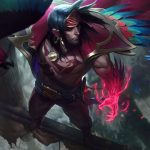Are you looking to up your game in League of Legends? Whether you’re a beginner or a pro, there are strategies for each phase of the game that can help you take your gaming skills to the next level.
In this article, we’ll look at early, mid, and late game strategies that will give you an edge over your opponents. So grab your controller and let’s get strategizing!
Key Takeaways
- Early game focuses on lane control and team coordination
- Acquiring wards to gain vision control and track enemy movement is crucial in the early game
- Mid game strategies involve maintaining advantage, securing objectives, and coordinating well in team fights
- Late game strategies include crafting a winning team composition, knowing when and how to initiate fights, and maintaining good positioning during team fights
Understanding the Phases of the Game
Knowing the phases of the game is essential for strategizing in League of Legends.
The Early Game phase, or laning phase, focuses on gaining lane control and team coordination. Players should coordinate to increase their gold income and gain experience points by killing minions and enemy champions. Objectives like towers and inhibitors can also be taken down during this time for an advantage in the mid-game.
During Mid Game, players focus on objectives like Dragon, Baron Nashor, and turrets while still trying to maintain lane control. This is a great time to make plays that catch enemies off guard or using team fights to create map pressure.
Lastly, Late Game mostly consists of team fights with coordinated attacks from both sides vying for victory. A powerful item set and strong understanding of each champion’s strengths are key components here as well as a good sense of timing when it comes to making plays around objectives like Baron Nashor or Elder Dragon.
Early Game Strategies
You need to focus on getting a lead in the early stages of the match. To succeed, it’s important to understand how team composition and item builds change throughout the game.
Both are key components that play into how you strategize in League of Legends during the early game. Having an understanding of your role in the team, as well as what each champion’s strengths and weaknesses are will help you decide which items will be best for your build.
It’s also important to recognize opportunities for taking objectives and pushing towers or lanes when they arise. You should also acquire wards to place around key locations so that your team can keep track of enemy movement and gain vision control.
All these factors play an integral role in achieving victory during the early game phase.
Mid Game Strategies
Now that you’ve achieved a lead in the match, it’s time to focus on mid-game strategies to maintain your advantage and secure victory.
Teamfighting is key during this phase; you’ll need to ensure all members of your team are able to coordinate well together. It’s also important to consider the positioning of each player, as optimal positioning can make or break a teamfight.
You should also take initiative by engaging with the enemy team when possible — just make sure you have enough backup! Lastly, warding placement is essential for keeping track of the enemy’s movements. Place wards in areas where they’re likely to roam so that your team can easily fight them off or avoid them if necessary.
Keep these tips in mind and you’ll be sure to dominate mid-game!
Late Game Strategies
As the match progresses, it’s time to focus on late game strategies to secure your victory.
Crafting a winning team composition is essential. Draft strong champions that are resilient and can provide utility. Choose versatile heroes with multiple crowd control abilities. Ensure your team has enough damage output for teamfights. Consider defensive champions that can protect teammates.
Knowing when and how to initiate a fight is key. Use your ultimate abilities strategically, watch the mini-map for enemy movements, and have good positioning during teamfights.
Analyzing Results
Once the match is over, it’s time to analyze the results and reflect on how well your strategy worked. Take a look at your team composition and assess if it was suitable for the situation. Did you have enough crowd control? How about map control?
You should also consider whether or not each member of your team was able to carry out their role effectively. Consider where each member of your team was located on the map throughout the game, and determine if they were in advantageous positions.





